Since I am a slow reader this task was quite a struggle for me. I am proud of all the diverse titles I managed to go through, and especially those which I would have never read if not for this course! At the beginning I found it challenging to consciously read books belonging to the genres which I deliberately cross out of my reading lists. I caught myself selecting titles of romance fiction (a less-favorite genre), for example, which also included heavy historic and political content to cater to my personal taste. In addition, for those unfamiliar genres (such as mystery, romance and fantasy or science fiction), I was quite unsure of the read-alikes that I should include. I felt insecure of the titles I was adding, and thus had to do much research using GoodReads and Novelist (which was not quite useful given I am including Arabic titles). I also found it extremely subjective having to assign values to the depth of story in comparison to the novel’s setting and characters and the author’s language. What I believe to have learned the most is the ability to read and later write (while filling the diary) with the purpose of informing another reader rather than one’s self. I think I am better able to describe a novel, by means of the appeal factor elements, in a way that gives a holistic flavor of that book. I enjoyed making connections to books from other genres in the “Would appeal to” section. I usually this section to the end, the recommendations then came in very naturally after the rest of the appeal factors were identified.
Hereunder are the entries for the six selected books.
--
The Blue Elephant (الفيل الأزرق) - Ahmed Mourad, 2012 [Mystery]
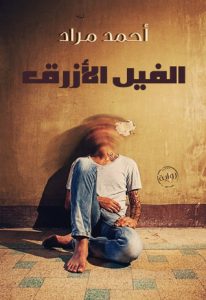
Storyline: Psychiatrist Yehia Rashed, returns to his job amidst his depression over the loss of family members and the struggle with drug abuse that followed it. He resumes his duties in El-Abbaseya psychiatric hospital where he is assigned “8 Gharb”, a special department for incarcerated mental patients. Yehia’s return coincides with the arrival of an old former Psychiatrist friend, Sherif Al Kordy, a patient accused of brutally killing his wife. Hoping to find out the truth behind Sherif’s case, Yehia embarks on a journey trying to find clues, investigating the crime scene and gathering as much information from Sherif’s younger sister Lobna, Yehia’s first true love. While he tries to unravel the many mysteries surrounding his friend, Yehia sinks into a world of hallucinations, magic spells, numbers and demons, and a blue pill that bears the print of a six-legged elephant. For Yehia, the world of hallucinations revealed with the pill “The Blue Elephant” helps him explore another world that eventually resolves Sherif’s crime.
Themes: Drug, Murder, Crime, Violence, Depression, Mental Health, Torture, Blood, Traces of Romance, Betrayal, Hallucinations, Paranormal, Fantasy, Time.
Setting: 21st century, rich neighbourhoods of Cairo - Egypt, Some flashbacks and imaginary scenes from Medieval Cairo. Some sinister settings in a psychiatric hospital.
Characters: Mysterious, Shrewd and clever protagonist (Yehia). The antagonist, Sherif, on the other hand is one of the most complex characters in the novel. He is paranoid and thus manifests rage combined with wit and signs of evil at times, and fragility at others. The female characters are generally less significant with the exception of a tattoo artist (Deega).
Author Style: A page turner piece. Like most of the author's work, this novel is written with potential movie adaptation in mind.
Tone and pacing: Fast paced. Sinister, enigmatic, and chilling
Would Appeal to: 1. Fantasy novels fans because of the multiple layers of richly described fantasy settings introduced during the protagonists DMT drug hallucinations. 2. Historic mystery fans, also because of the fantasy world the novel introduces, many of which take place in historic places and eras. 3. Thriller and fans of horror fiction because of the suspense accompanied by some literary "jumpscares".
Similar to: 1. Diamond Dust also by Ahmed Mourad - given it shares the fantasy twist and psychologically troubled protagonist. Both lean towards being popular fiction. 2. Metro by Magdy Elshafei - a graphic mystery novel of a crime taking place within a similar setting in Cairo despite being more of a thought-provoker.
Keywords: Friendship, DMT drug, crime, suspense, plot driven, fast paced, sinister, evil, Paranoia, Popular fiction.
Doorways: Story: 35% Characters 30% Setting: 30% language: 5%
--
The Woman from Tantoura (الطنطورية) - Radwa Ashur, 2010 [Historic Fiction]
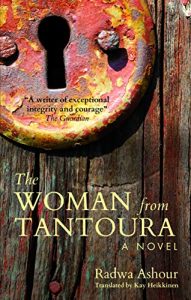
Storyline: A powerful human story of the coming of age of a young girl from her days in the village of al-Tantoura in Palestine up to the start of the new century in the diaspora. The novel documents milestone real events from the history of Palestine and the Arab-Israeli conflict through the simple narration of the protagonist Ruqayya, as she tries to make sense of the atrocities brought about on her family and herself as a result of the numerous wars. It is a love story of family, land and people. The novel also touches upon identity questions, repeated pain of loss, diaspora and cross-generational misunderstanding.
Themes: Good vs evil, memory, oral history, Arab-Israeli conflict, Palestine, refugees, diaspora, family, loss, war, violence, suspense, tragedy.
Setting: 1930s-1990s in Tantoura and Haifa, Palestine under British mandate. Followed by a change in geographic settings to Lebanese refugee camps, Alexandria, Kuwait and European cities.
Characters: Female characters are the most significant. Most characters tend to stick to the category of traumatized yet resilient. A few in denial characters.
Author Style: The novel is engaging, thoroughly researched for historic and geographic accuracy and topped with a well-connected web of family relationships. The novel is easy to follow and could easily be considered a page turner. The author's language is a mixture of formal and moderately sophisticated Arabic in the narration, and colloquial Palestinian, Egyptian and Lebanese Arabic for the dialogues.
Tone and pacing: Begins at a relatively leisurely pace, but picks up speed by the third chapter. Nostalgic, Loving, thought-provoking, Maternal, Sorrow, Dark.
Would Appeal to: 1. Women's Fiction for the novel heavily relies on two generations of women characters and is mainly voiced through their perspectives. 2. Those who like Political Fiction as it is heavily packed with real historic events that are politically charged for a conflict that continues to modern day. 3. Lovers of tragedy novels will certainly like it as there is much sorrow that is described as a consequence to the series of unfortunate events that affects the protagonist and her family. 4. War novels enthusiasts, for there are multiple battle scenes described in the novel with much details, again, most of which are inspired from real events that happened in real places.
Similar to: 1. Mornings in Jenin by Susan Abulhawa - for it also shares the tragic developments of a Palestinian family during the same time period of pre-1948 war to the late twentieth/early twenty first centuries. Both novel follow the family members through diaspora. 2. Granada another historic novel by Radwa Ashur, for despite the fact that both the historic and geographic settings are different, they both describe the developments of a multi-generational family through war and conflict. Both rely heavily on female characters and both describe feelings of sorrow, loss and hope. Both are also well researched historically.
Keywords: Palestine, Family, Diaspora, Refugees, Twentieth Century, Arab-Israeli Conflict, memory, intergenerational dialogue, friendship, maternity.
Doorways: Story: 20% Setting 40% Characters 20% Language 20%
--
Metro (مترو) - Magdy Elshafei, 2009 [Contemporary fiction]

Storyline: The story of young and ill-tempered computer science engineer “Shehab”, rebellion of the social status quo and widespread corruption in Egypt. In his professional life, Shehab is broke and constantly crushed by a fierce competition with powerful business tycoons. As an act of vengeance and objection, Shehab robs a bank. The novel touches upon many actual contemporary corruption cases, acts of political dissent, and class struggle in Egypt.
The book has been banned in Egypt on grounds of morality (given its explicit sexual contents).
Themes: Politics, crime, romance, sex, vengeance, violence.
Setting: 21st century Cairo - Egypt. Indoor and outdoor street settings.
Characters: Mostly male characters; frustrated, witty, rebel and genius computer programmer protagonist (Shehab), forms squad with lower class poor characters: programmer assistant (Mostafa) and upper-Egyptian shoe cleaner (Wanas). (Dina), Shehab's girlfriend is a very progressive female character who is also a rebel and partner in crime.
Author Style: The novel offers a nice balance of drawings and text. It is engaging and well adapted to the targeted readers' base. The author's uses colloquial Egyptian Arabic with its different accents for urban and rural characters. The language includes much slang and swearing.
Tone and pacing: Fast paced. Sinister, puzzling, chilling, erotic.
Would Appeal to: 1. Political fiction fans given the heavy presence of the contemporary Egyptian political scene and its underlying impact on the characterization and enfolding events. 2. Crime fiction lovers, since the bank robbery and its consequences are the main events highlighted in the novel.
Similar to: 1. The Locust Effect by Ahmed Khaled Tawfik - also a graphic Arabic novel that shares the main theme of political dissent in contemporary Egypt (post 2011 revolution), the author uses combination of colloquial Egyptian and formal Arabic. 2. Tok Tok literary magazine that only offers short graphic novels in colloquial Egyptian Arabic. The themes and genres of the short stories published in Tok Tok are not pre-defined and thus change with every issue of the magazine.
Keywords: Political unrest, protests, class struggle, unemployment, poverty, police brutality.
Doorways: Story: 20% Setting 30% Characters 20% Language 30%
--
Frankenstein in Baghdad (فرانكشتاين في بغداد) - Ahmed Saadawi, 2013 [Fantasy or SciFi]
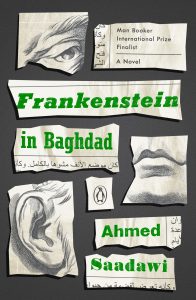
Storyline: A gothic horror tale of a "Hady Attaq" - a local junk collector and an eccentric fixture at a local café- who haunts the streets of Baghdad, scavenging human body parts on the scene of explosions to sew together a human corpse. Upon completion, this Frankenstein, or “what’s-its-name” as he calls it, is unleashed on a search for revenge. Hady narrates the events to the cafe's clientele, as they mock him for his exaggerated fictitious day dreams, except for one; police officer “Sorrour Meguid”, an under-cover detective who grows suspicious of Hady. Meguid is responsible of identifying and arresting this mysterious serial killer. The fates of the many characters are intertwined in the thrilling chase on the streets and neighborhoods of Baghdad, making crucial transformations, and everyone is discovering that they are, to some degree, the Frankenstein, or at least another reason for his existence. The novel develops in an unusual manner and offers a twist ending.
Themes: Horror, Fantasy, war, Science Fiction, Vengeance.
Setting: 2005 in U.S.-occupied Baghdad. Most of the settings are outdoor in the city's streets, alleys, and neighborhoods.
Characters: Mostly male characters; protagonist (Hady Attaq) a scavenger, eccentric and wily junk collector whose job forces his to be on the street most of the time. (Mahmoud al-Samedi) is a cunning and ambitious local journalist. (Sorrour Meguid) a witty and suspicious under-cover police detective. (what’s-its-name) a monster who is the product of body parts collected from victims of terrorism and violence in Baghdad is a terrifying serial revenge killer.
Author Style: A page turner yet complex novel weaves the experiences of a diverse group of Iraqis during the chaos that accompanied wartime. The novel is very engaging and instantly triggers the reader’s attention and curiosity.
Tone and pacing: Fast paced. Horrific; Haunting; Strong sense of place, Black humor Surreal, Graphic.
Would Appeal to: 1. Horror fiction fans given its outrageously skillful horror metaphor and grotesque acts. 2. Black Comedy fiction fans, for the novel contains many conversations and situations that trigger laughter that is generated from very dark situations.
Similar to: 1. Comemadre by Roque Larraquy - For it shared much of the vulgarity and stimulation sentiments of discomfort. Also includes fantasy imaginary man-eating creatures. Darkly funny, smart, and engrossing. 2. Redeployment by Phil Klay - is a collection of short stories by a former Marine captain and Iraq veteran focuses on the complexities of life for soldiers on the front lines and after, exploring themes ranging from brutality and faith to guilt and survival.
Keywords: Terrorism, Iraq, imaginary character, monsters, wartime, death, murder, revenge.
Doorways: Story: 30% Setting 30% Characters 20% Language 20%
--
The Open Door (الباب المفتوح) - Latifah Zayyat, 1960 [Romance]
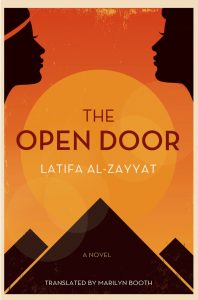
Storyline: It is one of the first novels by a woman to sketch the panorama of Egyptian society on the verge of national independence in 1952. The novel presents female protagonist - Laila's journey to discover herself and her inner strength and her struggle to let go of traditions' chains that held her from finding true love, being what she really is and from establishing her place in the world are inspiring. The main theme of the novel is a love story between Laila and progressive political activist, Hussein. The animated dialogue between both characters gives a vivid sense of men and women caught up in historical events and yet continuing to have personal lives filled with joy, grief, and tension.
Themes: Romance, political change, anti-colonial resistance, feminism.
Setting: Cairo during the period of early 1950s and the Suez Crisis in 1956. Much of the conversations and events presenting regressive societal mindset take place in-doors. Most of the romance between Laila and Hussein are outdoors in the streets. Some events take place in the coastal city of Port Said.
Characters: Laila the female protagonist is emotionally complex character. She is romantic, patriotic, intellectual headstrong, opinionated and at times hesitant. Hussein - a progressive male figure – is a friend of Laila’s brother is a political and anti-colonial activist who falls in love with Laila. Gamila, laila’s cousin is the complete opposite character. She is portrayed as submissive to the patriarchal society and family pressures, yet only revolts societal norms in secret. Fouad is Laila’s professor during her time at university who proposes to marry her with the approval of her parents. Fouad is conservative and controlling disagreeable professor and suiter.
Author Style: A feminist author and literary critic, Zayyat offers here tempestuous love stories, remarkably open discussion of women's sexuality, and discussions of revolutionary activism by both men and women, the irony of men who are progressive until it comes to their own relationships with women, and a country and a young woman coming of age and having choices previously not available to either.
Tone and pacing: Relatively slow paced. Loving, thought-provoking, chilling, emotional.
Would Appeal to: 1. Women's and feminist Fiction for the novel heavily relies on women characters representing a spectrum of progressivness confronting rigid traditions. 2. Those who like Political Fiction as it is heavily packed with real historic events that are politically charged and have shaped modern-day Egypt.
Similar to: 1. The Black Glasses by Ehssan Abdel Qodoos - which shares the themes of feminism in modern Egypt coupled with a love story. It also includes many conversations on the subjects gender roles in the society and rebelling against regressive traditions. 2. The first rebellion by Chesney, Marion, although in the different geographic context of Scotland, UK, it's main theme is feminism and female political activism and a main female protagonist also engaged in a solid romance.
Keywords: Sexuality, feminism, love, progressiveness, Suez Crisis, Egypt Politics, modern-history, society, patriarchy, war, traditions.
Doorways: Story: 20% Setting 25% Characters 35% Language 20%
--
Children of the Alley (AKA Children of Gabalawi) (أولاد حارتنا) - Naguib Mahfouz, 1959 [Classic]
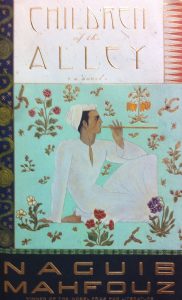
Storyline: The story recreates the genesis of man and the interlinked history of the three monotheistic Abrahamic religions (Judaism, Christianity, and Islam), symbolically represented in a setting of an imaginary 19th century Cairene alley. The author guides us through the history of the alley whose residents—some fearsome, most fearful, a few fearless—are all the descendants of one man, Gabalawi, who now keeps himself hidden away in the mansion at the top of the alley. From the ultimate old lord who disowns one son for cruel pride and puts another to the test, to the savior of a succeeding generation, we observe the men and women of this typical Cairo neighborhood innocently rebuilding the lives of their respected descents, telling through their rivalries, love affairs, and miracles the spiritual history of mankind.
Themes: Good vs evil, memory, oral history, generations, family, politics.
Setting: 19th century Cairo. All events take place in a typical alley in Cairo which is mostly composed of poor residents houses with the exception of few houses inhabited by the neighbourhoods elites and higher class residents.
Characters: Critics claimed that Gabalawi stands for God. Mahfouz rejected this, saying that he stood for "a certain idea of God that men have made" and that "Nothing can represent God. God is not like anything else. God is gigantic." The first four sections retell, in succession, the stories of: Adam (Adham) and how he was favored by Gabalawi over the latter's other sons, including the eldest Satan/Iblis (Idris). In subsequent generations the heroes relive the lives of Moses (Gabal), Jesus (Rifa'a) and Muhammad (Qasim). The followers of each hero settle in different parts of the alley, symbolizing Judaism, Christianity and Islam. The protagonist of the book's fifth section is Arafa, who symbolizes modern science and comes after the prophets, while all of their followers claim Arafa as one of their own. Central to the plot are the futuwwat (plural of futuwwa, 'strongman'), who control the alley and exact protection money from the people. The successive heroes overthrow the strongmen of their time, but in the next generation new strongmen spring up and things are as bad as ever.
Author Style: Mahfouz's storytelling powers is coupled with a daring and discerning criticism of life, religion and traditions is the main value of this novel. The novel is another building block in the author's body of literature set in historic Cairo alleys during the 19th century. The novel is very engaging since it builds on the known history of mankind and uses symbols of real characters and read events. The author is very descriptive of the spaces and characters in the novel.
Tone and pacing: Relatively slow paced. Sinister, enigmatic, thought-provoking, philosophical.
Would Appeal to: 1. Political fiction lovers will enjoy this novel for much of the conflict it involves is fueled by class-struggle, in addition to the power dynamics build upon the relationships between the masses, the elite and the local strongmen. 2. Historic fiction fans will also enjoy this novel given its symbolic handling of history of mankind and the three Abrahamic religions. The author has researched the history involved in the genesis and has skillfully utilized it to serve the plot.
Similar to: 1. The Harafish by Naguidb Mahgouz for it also portrays interconnected generations of one family, the conflict of good versus evil, class-struggle, power-dynamics within a Cairo alley in the same time setting of the 19th century. 2. Angels and Demons By Dan Brown, since it shares the historic flavor and biblical influence. Despite the lack of generational interconnectivity, it also shares the theme of faith versus science and modern knowledge.
Keywords: Class-struggle, poverty, violence, religion, science, symbolism, Bible, Genesis, prophets, faith vs reason, Cairo, Egypt.
Doorways: Story 20% Setting 30% Characters 40% Language 10%
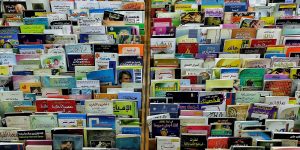
Learning Significance